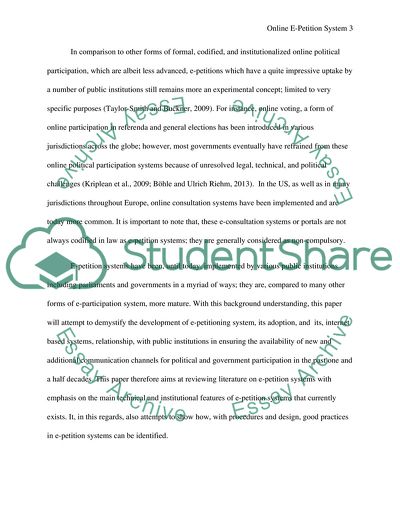Cite this document
(“Online E-Petition System Literature review Example | Topics and Well Written Essays - 1250 words”, n.d.)
Online E-Petition System Literature review Example | Topics and Well Written Essays - 1250 words. Retrieved from https://studentshare.org/information-technology/1638520-online-e-petition-system
Online E-Petition System Literature review Example | Topics and Well Written Essays - 1250 words. Retrieved from https://studentshare.org/information-technology/1638520-online-e-petition-system
(Online E-Petition System Literature Review Example | Topics and Well Written Essays - 1250 Words)
Online E-Petition System Literature Review Example | Topics and Well Written Essays - 1250 Words. https://studentshare.org/information-technology/1638520-online-e-petition-system.
Online E-Petition System Literature Review Example | Topics and Well Written Essays - 1250 Words. https://studentshare.org/information-technology/1638520-online-e-petition-system.
“Online E-Petition System Literature Review Example | Topics and Well Written Essays - 1250 Words”, n.d. https://studentshare.org/information-technology/1638520-online-e-petition-system.


